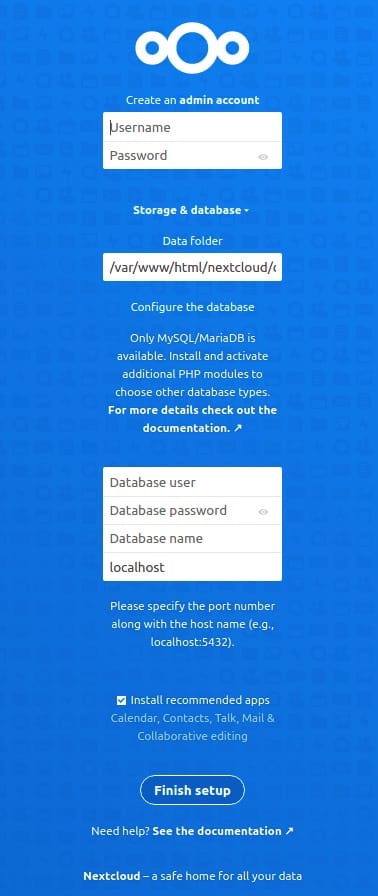How To Install Nextcloud on openSUSE

In today’s digital age, having control over your data is more important than ever. Nextcloud, an open-source cloud storage and collaboration platform, offers a powerful solution for those seeking to maintain their privacy and security. This guide will walk you through the process of installing Nextcloud on openSUSE, a robust and user-friendly Linux distribution.
Nextcloud provides a versatile, self-hosted alternative to commercial cloud services, allowing you to store, share, and collaborate on files, calendars, and more. By choosing openSUSE as your operating system, you’re leveraging a stable, well-supported platform that’s ideal for hosting Nextcloud. Let’s dive into the step-by-step process of setting up your own Nextcloud instance on openSUSE.
Prerequisites
Before we begin the installation process, ensure that your system meets the following requirements:
- A server or computer running openSUSE Leap (latest stable version recommended)
- Root access or sudo privileges
- At least 512 MB of RAM (1 GB or more recommended for better performance)
- A minimum of 10 GB free disk space (more if you plan to store a large amount of data)
- A stable internet connection
You’ll also need to have the following software packages ready to install:
- Apache web server
- PHP 7.4 or higher
- MariaDB or MySQL database server
- Various PHP modules required by Nextcloud
Ensure that you have the necessary permissions to install software and modify system configurations. If you’re not the root user, make sure you have sudo access.
Preparing the openSUSE System
Before installing Nextcloud, it’s crucial to prepare your openSUSE system. Follow these steps to ensure your system is up-to-date and properly configured:
1. Update the System
Open a terminal and run the following commands to update your system:
sudo zypper refresh
sudo zypper updateThis will refresh the package repositories and install any available updates.
2. Install Required Dependencies
Install the necessary dependencies by running:
sudo zypper install apache2 mariadb mariadb-tools php7 php7-mysql apache2-mod_php7 php7-gd php7-mbstring php7-intl php7-curl php7-zip php7-opcacheThis command installs Apache, MariaDB, PHP, and various PHP modules required by Nextcloud.
3. Configure Firewall Settings
If you have the firewall enabled, you’ll need to open ports 80 (HTTP) and 443 (HTTPS) to allow web traffic. Use these commands:
sudo firewall-cmd --permanent --add-service=http
sudo firewall-cmd --permanent --add-service=https
sudo firewall-cmd --reloadThese commands add exceptions for HTTP and HTTPS traffic and reload the firewall configuration.
Installing and Configuring the Web Server
Apache is the recommended web server for Nextcloud. Let’s set it up:
1. Start and Enable Apache
Run the following commands to start Apache and enable it to run at boot:
sudo systemctl start apache2
sudo systemctl enable apache22. Enable Necessary Apache Modules
Enable the required Apache modules with these commands:
sudo a2enmod rewrite
sudo a2enmod headers
sudo a2enmod env
sudo a2enmod dir
sudo a2enmod mime3. Configure Virtual Hosts
Create a new virtual host configuration file for Nextcloud:
sudo nano /etc/apache2/vhosts.d/nextcloud.confAdd the following content to the file:
<VirtualHost *:80>
ServerName your_domain_or_IP
DocumentRoot /srv/www/htdocs/nextcloud
<Directory /srv/www/htdocs/nextcloud>
Options +FollowSymlinks
AllowOverride All
Require all granted
<IfModule mod_dav.c>
Dav off
</IfModule>
</Directory>
</VirtualHost>Replace “your_domain_or_IP” with your server’s domain name or IP address.
Save the file and exit the editor. Then, restart Apache to apply the changes:
sudo systemctl restart apache2Setting Up the Database
Nextcloud requires a database to store its data. We’ll use MariaDB for this purpose:
1. Start and Enable MariaDB
sudo systemctl start mariadb
sudo systemctl enable mariadb2. Secure the Database Installation
Run the MySQL secure installation script:
sudo mysql_secure_installationFollow the prompts to set a root password, remove anonymous users, disallow root login remotely, and remove the test database.
3. Create a Database for Nextcloud
Log in to MariaDB as root:
sudo mysql -u root -pCreate a new database and user for Nextcloud:
CREATE DATABASE nextcloud;
CREATE USER 'nextclouduser'@'localhost' IDENTIFIED BY 'your_password';
GRANT ALL PRIVILEGES ON nextcloud.* TO 'nextclouduser'@'localhost';
FLUSH PRIVILEGES;
EXIT;Replace ‘your_password’ with a strong, unique password.
PHP Installation and Configuration
PHP is a crucial component for running Nextcloud. Let’s ensure it’s properly configured:
1. Verify PHP Installation
Check if PHP is installed correctly:
php -vThis should display the PHP version information.
2. Configure PHP for Optimal Performance
Edit the PHP configuration file:
sudo nano /etc/php7/apache2/php.iniMake the following changes:
memory_limit = 512M
upload_max_filesize = 500M
post_max_size = 500M
max_execution_time = 300
date.timezone = Your/TimezoneReplace “Your/Timezone” with your actual timezone (e.g., “America/New_York”).
3. Test PHP Installation
Create a test PHP file:
echo '<?php phpinfo(); ?>' | sudo tee /srv/www/htdocs/info.phpAccess this file in your web browser by navigating to http://your_server_ip/info.php. If you see the PHP information page, PHP is working correctly.
Downloading and Installing Nextcloud
Now that we have prepared our system, let’s install Nextcloud:
1. Download Nextcloud
Navigate to the /tmp directory and download the latest Nextcloud package:
cd /tmp
wget https://download.nextcloud.com/server/releases/latest.tar.bz22. Extract and Move Files
Extract the downloaded archive and move it to the web directory:
sudo tar -xjf latest.tar.bz2
sudo mv nextcloud /srv/www/htdocs/3. Set Proper Permissions
Set the correct ownership and permissions:
sudo chown -R wwwrun:www /srv/www/htdocs/nextcloud
sudo chmod -R 755 /srv/www/htdocs/nextcloudNextcloud Web Configuration
With Nextcloud files in place, we can now complete the installation through the web interface:
1. Access the Web Installer
Open your web browser and navigate to http://your_server_ip/nextcloud. You should see the Nextcloud setup page.

2. Create Admin Account
Enter your desired username and password for the admin account.
3. Configure Database Connection
Select “MySQL/MariaDB” as the database, and enter the following details:
- Database user: nextclouduser
- Database password: the password you set earlier
- Database name: nextcloud
- Host: localhost
4. Finalize Installation
Click “Finish setup” to complete the installation process. This may take a few minutes.
Post-Installation Steps
After successfully installing Nextcloud, there are a few additional steps to enhance security and performance:
1. Secure Nextcloud Installation
Edit the Nextcloud configuration file:
sudo nano /srv/www/htdocs/nextcloud/config/config.phpAdd the following lines to improve security:
'trusted_domains' =>
array (
0 => 'your_server_ip',
1 => 'your_domain_name',
),
'overwrite.cli.url' => 'http://your_domain_name',
'default_phone_region' => 'your_country_code',Replace the placeholders with your actual server IP, domain name, and country code.
2. Enable HTTPS
For production use, it’s crucial to secure your Nextcloud instance with HTTPS. You can use Let’s Encrypt to obtain a free SSL certificate. Install the certbot package:
sudo zypper install certbotThen, obtain and install a certificate:
sudo certbot --apache -d your_domain_nameFollow the prompts to complete the process.
3. Configure Cron Jobs
For better performance, set up a cron job for Nextcloud background tasks:
sudo crontab -u wwwrun -eAdd the following line:
*/5 * * * * php -f /srv/www/htdocs/nextcloud/cron.phpThis will run Nextcloud’s background jobs every 5 minutes.
Troubleshooting Common Issues
While installing Nextcloud on openSUSE is generally straightforward, you might encounter some issues. Here are solutions to common problems:
1. Permission Problems
If you encounter permission errors, double-check the ownership and permissions of the Nextcloud directory:
sudo chown -R wwwrun:www /srv/www/htdocs/nextcloud
sudo chmod -R 755 /srv/www/htdocs/nextcloud2. Database Connection Errors
If you’re having trouble connecting to the database, verify your database settings in the Nextcloud configuration file:
sudo nano /srv/www/htdocs/nextcloud/config/config.phpEnsure the database details are correct.
3. PHP Configuration Issues
If Nextcloud complains about PHP settings, review your php.ini file:
sudo nano /etc/php7/apache2/php.iniMake sure the settings match the recommendations in the PHP Installation and Configuration section above.
Congratulations! You have successfully installed Nextcloud. Thanks for using this tutorial for installing the Nextcloud open-source file hosting on your openSUSE system. For additional or useful information, we recommend you check the official Nextcloud website.